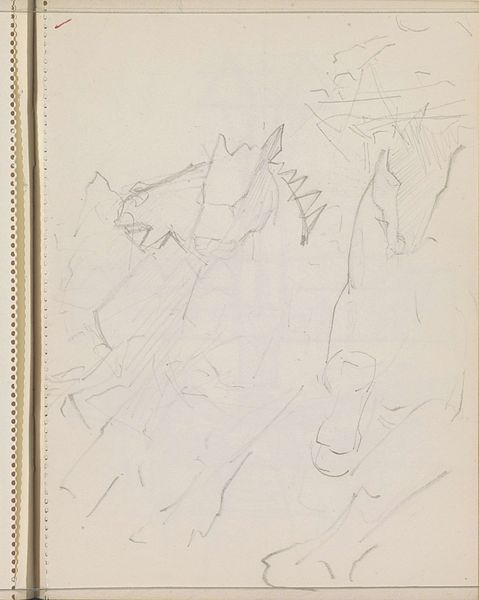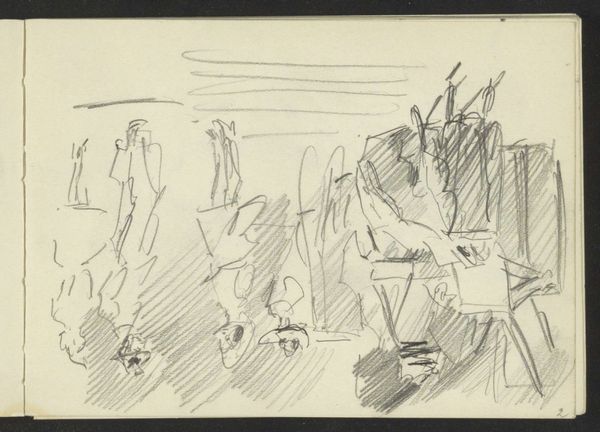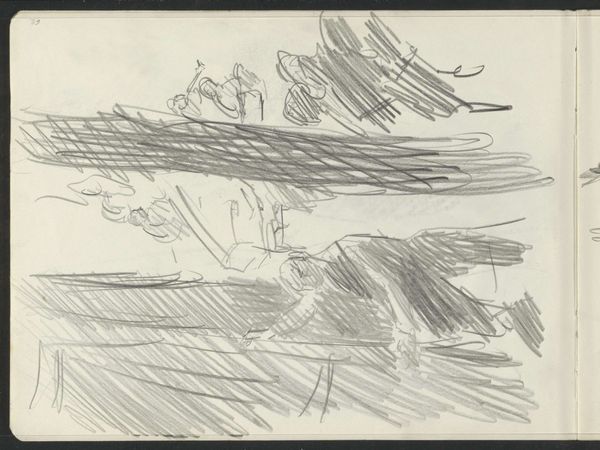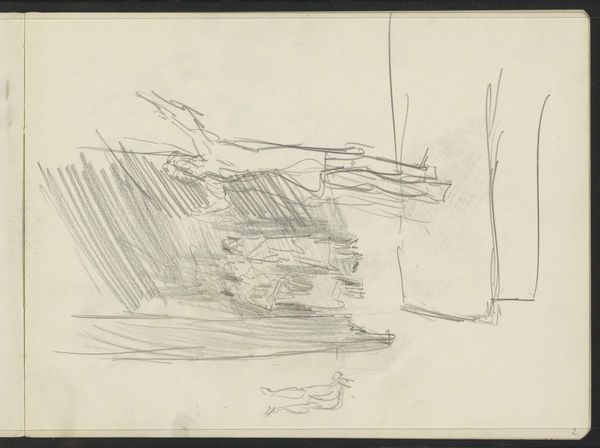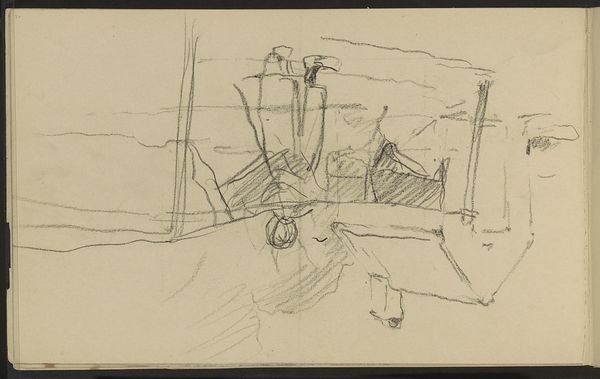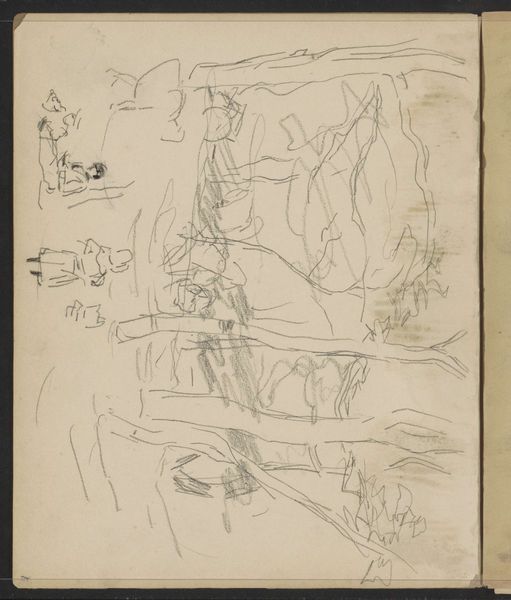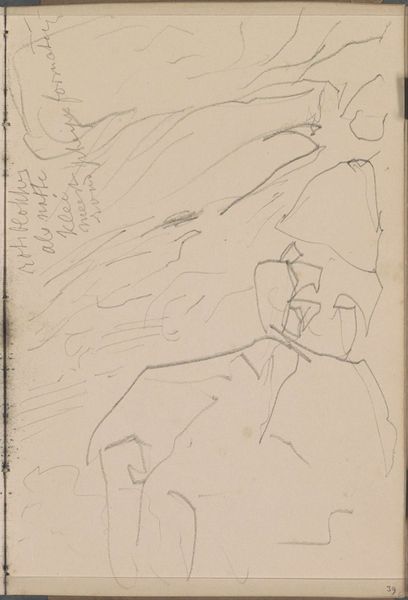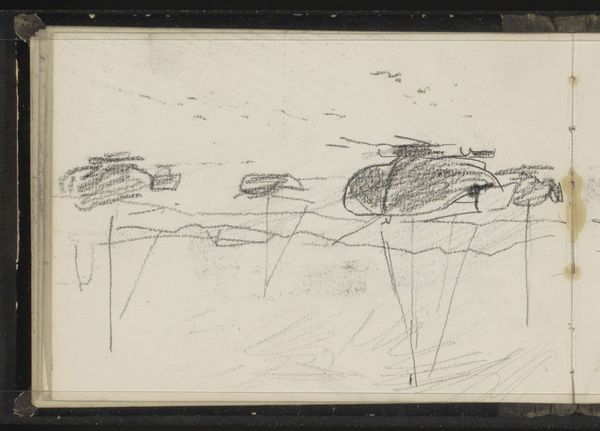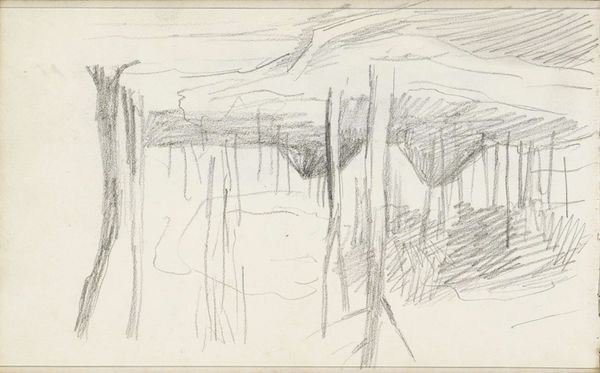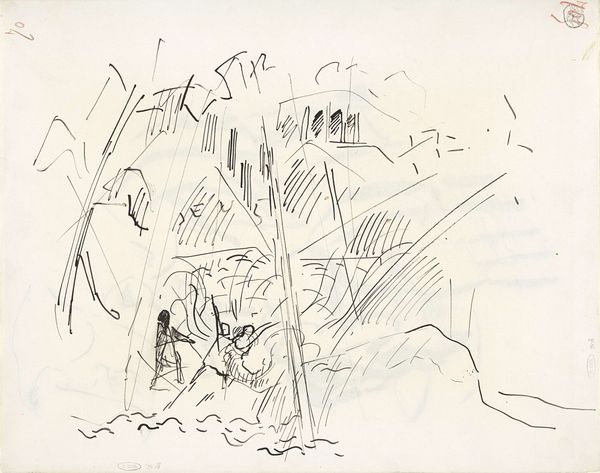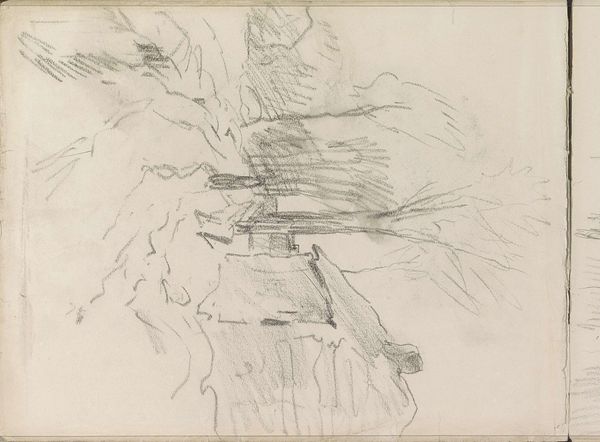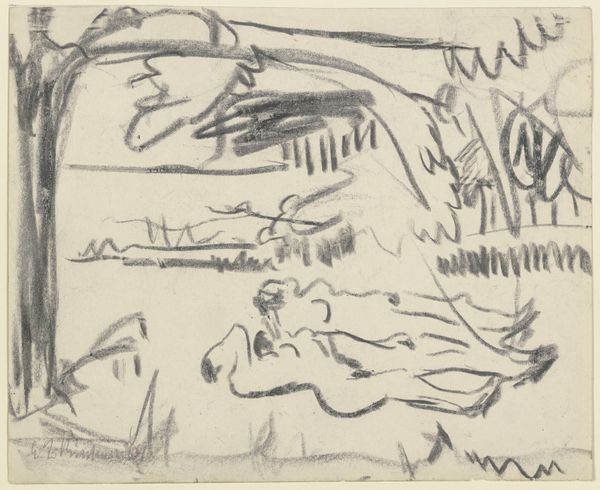
Copyright: Rijks Museum: Open Domain
Editor: So, this is "Stadsgezicht met schepen bij een kade," a cityscape with ships by a quay, created around 1897-1899 by Willem Witsen. It's a pencil and pen sketch, quite simple and unassuming. What captures my attention is the stark contrast between the heavily shaded areas on the left and the much lighter, sketchier boat on the right. What do you see in terms of the composition here? Curator: Indeed, it's a fascinating study in contrasts. I'm immediately drawn to the formal relationship between the dense, almost claustrophobic darkness on the left and the open, airy space defined by the linear forms of the ships and the suggestion of water on the right. Note how the artist uses a vocabulary of marks – a dense hatching versus single, confident lines – to define volume and space. Consider how the balance operates; is it symmetrical? Is it stable or dynamic? Editor: I see what you mean about the marks, but is the contrast too extreme? Does the darker section overpower the delicate rendering of the ships, throwing off the balance? Curator: Perhaps, and yet, that imbalance might be precisely the point. Is it not more a function of capturing the fleeting qualities of light? Observe how the linear quality of the sketch leads the eye toward the blank canvas of the water and beyond; it’s a play with the negative space just as much as the positive forms. Editor: So you're saying the starkness, the unfinished quality even, is a deliberate choice emphasizing light and shadow, and guiding the viewer's gaze? I hadn’t thought of it that way. It does force you to engage actively with the image. Curator: Precisely. What is left out becomes as vital as what is included, thereby provoking a different engagement. By exploring these formal elements we learn how visual information is carefully structured. Editor: This makes me think about how the artist’s style really directs how we interpret the subject. Thanks, that was very insightful. Curator: Indeed, understanding the construction and form helps unravel some visual tensions and create more enriching perspectives on art.
Comments
No comments
Be the first to comment and join the conversation on the ultimate creative platform.


